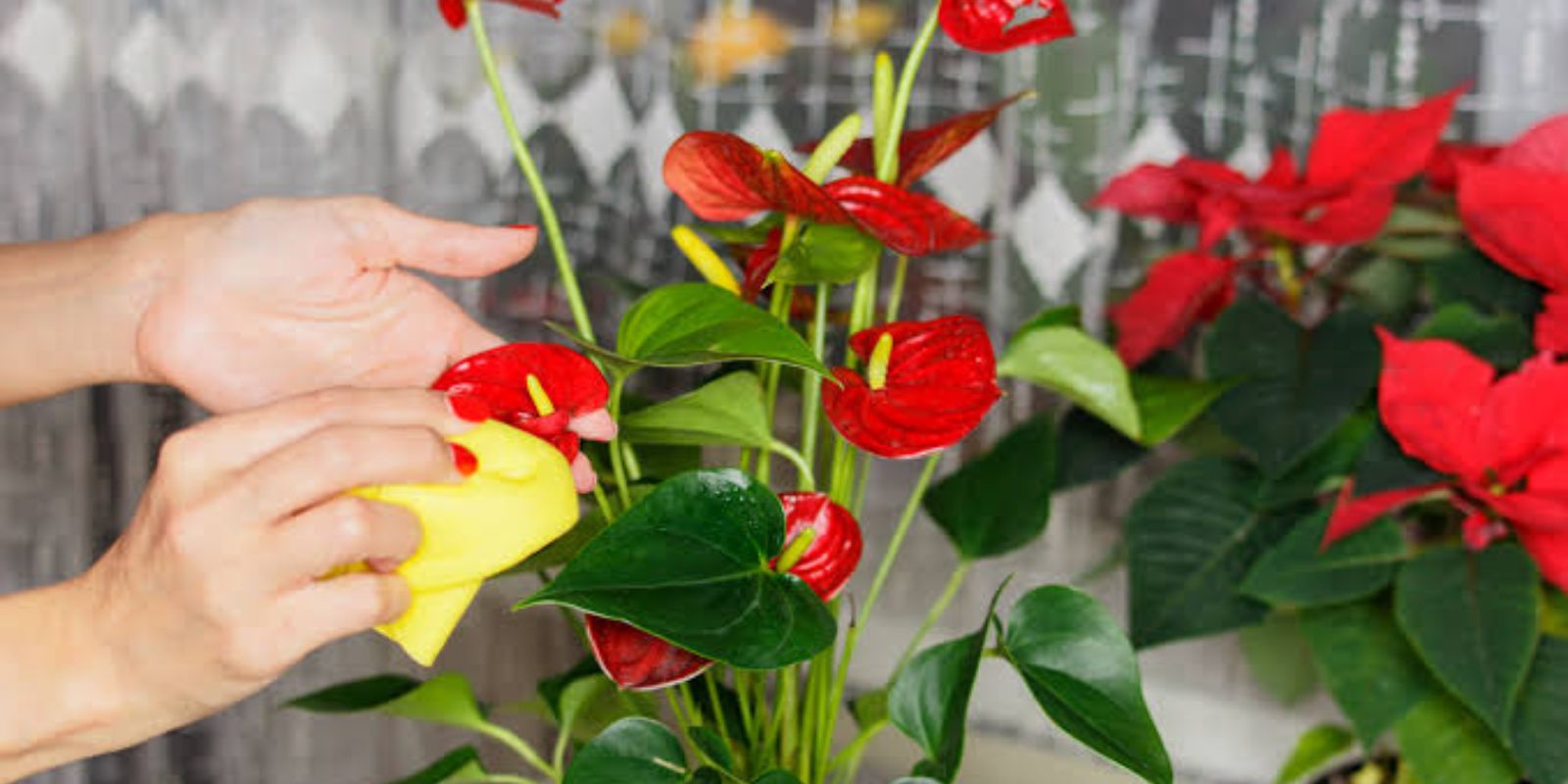Anthuriums, often called Flamingo Flowers, are celebrated for their striking, heart-shaped blooms and glossy green foliage. Known for their ability to bloom year-round with proper care, Anthuriums can remain vibrant for up to 15 years or more. This article reveals the secrets to keeping your Anthurium healthy, thriving, and blooming naturally for decades, using a few simple but effective techniques.
Understanding Anthurium Growth
Before diving into care tips, it’s essential to understand the basic needs of an Anthurium. Native to tropical rainforests, these plants love warmth, humidity, and indirect sunlight. Providing an environment that mimics their natural habitat will keep your Anthurium happy and blooming.
1. Provide Optimal Lighting
Anthuriums thrive in bright, indirect sunlight. Too much direct sunlight can scorch their leaves, while insufficient light can prevent blooming.
- Ideal Spot: Place your Anthurium near an east-facing window or a location where it receives diffused light.
- Artificial Light: If natural light is limited, use grow lights to supplement.
Pro Tip: Rotate the plant occasionally to ensure even growth.
2. Maintain High Humidity
Anthuriums are tropical plants that thrive in humidity levels of 70–80%.
- Humidity Boosters:
- Use a humidifier to maintain moisture in the air.
- Place the pot on a humidity tray filled with water and pebbles.
- Mist the leaves daily with room-temperature water.
Caution: Avoid over-misting, as wet foliage can attract pests and diseases.
3. Water Correctly
Improper watering is a common reason Anthuriums fail to bloom.
- Watering Schedule: Water your plant when the top inch of soil feels dry.
- Drainage: Use a pot with drainage holes and ensure excess water doesn’t pool at the bottom.
- Avoid Overwatering: Anthuriums are susceptible to root rot, so it’s better to underwater slightly than to overwater.
4. Use a Balanced Fertilizer
A natural fertilizer rich in phosphorus and potassium can encourage flowering while maintaining the plant’s health.
- Homemade Fertilizer Recipe:
- Mix banana peels, eggshells, and a bit of wood ash in water. Let it sit for a few days, then dilute and use as fertilizer.
- Alternatively, compost tea or diluted fish emulsion works well.
- Fertilizer Schedule: Feed your Anthurium every 4–6 weeks during its active growing season (spring and summer).
Tip: Avoid excessive nitrogen, as it promotes leaf growth at the expense of flowers.
5. Ensure Proper Soil
Anthuriums prefer a light, well-draining soil mix.
- Recommended Mix:
- Combine equal parts orchid bark, peat moss, and perlite for a perfect balance of aeration and moisture retention.
- Soil pH: Keep the soil slightly acidic, around 5.5 to 6.5, to maximize nutrient absorption.
Pro Tip: Refresh the soil every couple of years to prevent nutrient depletion.
6. Prune for Longevity
Regular pruning keeps your Anthurium healthy and focused on producing blooms.
- What to Prune:
- Remove dead or yellowing leaves.
- Cut off spent flowers to encourage new blooms.
- How to Prune: Use sterilized scissors or pruning shears to prevent infections.
Tip: Use the pruned stems for propagation to grow more Anthuriums.
7. Repot When Necessary
Anthuriums need repotting every 2–3 years, or when the roots outgrow their current container.
- Signs It’s Time to Repot:
- Roots are visible above the soil or through drainage holes.
- The plant looks crowded and growth slows.
- How to Repot:
- Choose a pot 1–2 inches larger in diameter than the current one.
- Refresh the soil with a nutrient-rich mix.
8. Keep the Temperature Consistent
Fluctuating temperatures can stress Anthuriums, causing them to stop blooming.
- Ideal Temperature Range: 75–85°F (24–29°C) during the day and not below 60°F (15°C) at night.
- Avoid Drafts: Keep the plant away from air conditioners, heaters, and cold windows.
9. Protect Against Pests and Diseases
Common pests like aphids, mealybugs, and spider mites can damage your Anthurium.
- Prevention:
- Wipe the leaves with a damp cloth regularly.
- Inspect for pests during watering or pruning sessions.
- Natural Pest Control:
- Use neem oil spray to eliminate infestations naturally.
Tip: Good air circulation reduces the risk of fungal diseases.
10. Propagation for Longevity
Extend your Anthurium’s lifespan by propagating new plants from its roots or cuttings.
- How to Propagate:
- Divide the root ball during repotting, ensuring each section has at least one stem and healthy roots.
- Plant the divisions in fresh soil and care for them as you would a mature plant.
The Secret “Bloom Booster” Technique
A tried-and-tested natural bloom booster involves the use of banana peels. Banana peels are rich in potassium and phosphorus, nutrients that stimulate flowering.
- How to Use:
- Blend banana peels with water to create a liquid fertilizer.
- Apply the mixture to the soil around your Anthurium every few weeks.
- Benefits:
- Encourages vibrant, long-lasting blooms.
- Provides additional nutrients to the plant.
Common Mistakes to Avoid
- Overwatering: Leads to root rot and yellowing leaves.
- Excess Fertilizer: Can cause salt buildup and damage roots.
- Low Humidity: Results in brown leaf tips and stunted growth.
- Poor Light: Prevents the plant from blooming.
Conclusion: A Flourishing Anthurium for Years to Come
Growing an Anthurium that blooms continuously for up to 15 years might seem daunting, but it’s achievable with consistent care and a few natural techniques. By providing the right environment, using organic fertilizers, and maintaining a regular care routine, you can enjoy the beauty of this tropical plant for decades.
Share your experience! Have you tried growing Anthuriums? What’s your favorite bloom-boosting tip? Let us know in the comments below.

